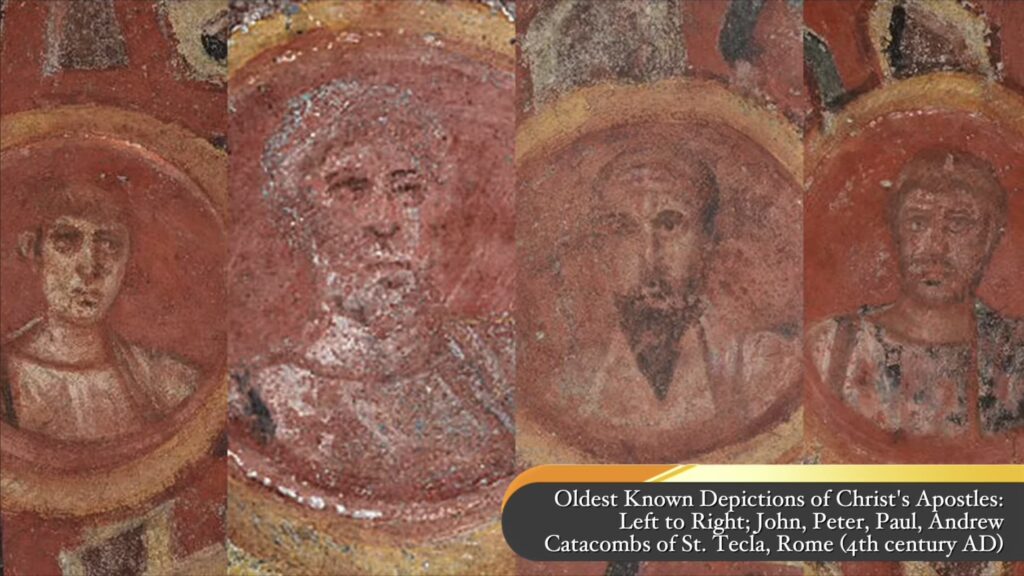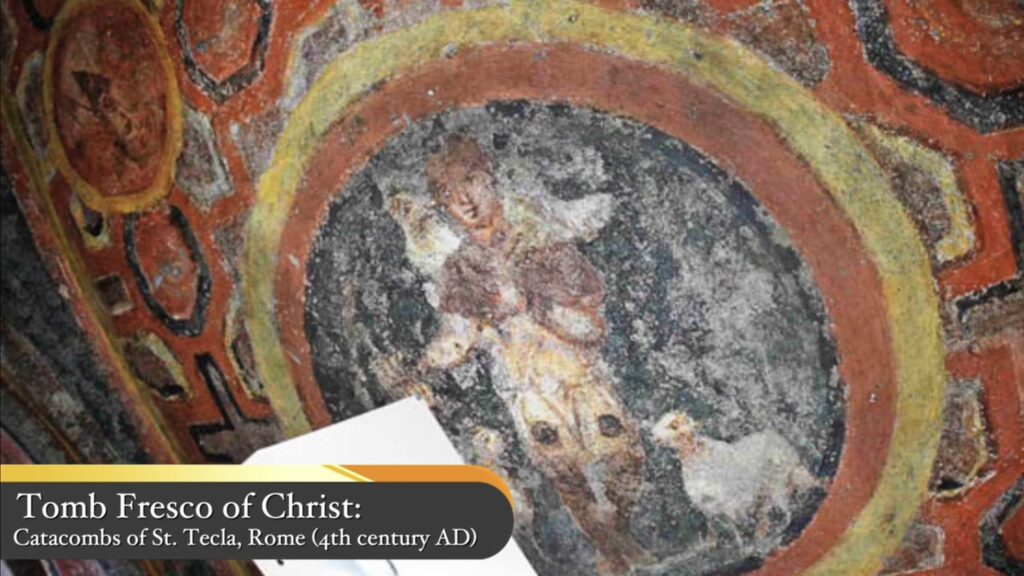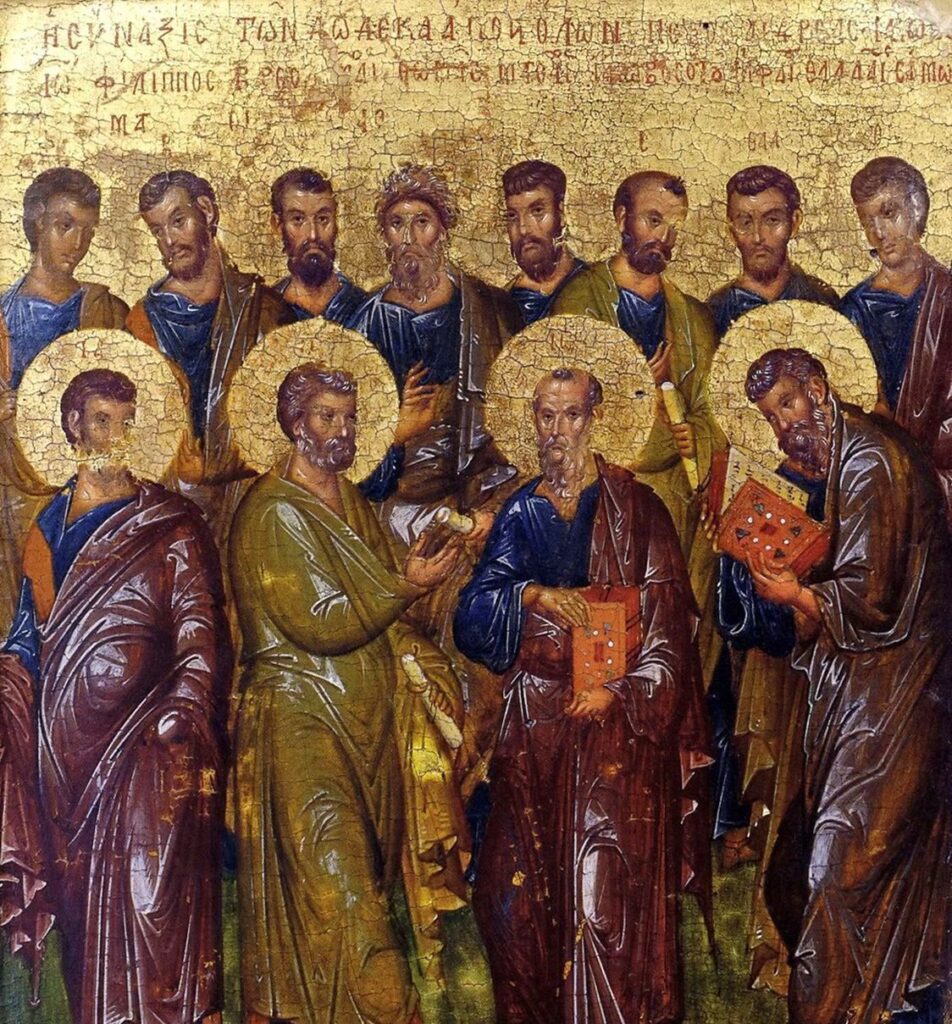Iconography is not Idolatry
Due to misinterpretations of certain Biblical passages, many adherents to Protestantism assert that creating any image is forbidden, whether be for religious, artistic, or entertainment purposes. Among the passages they appeal to, the most prevalent is Exodus 20:4-5, which states, “You shall not make for yourself an idol, or any likeness of what is in heaven above or on the earth beneath, or in the water under the earth. You shall not worship them nor serve them…”
With an accurate word-for-word translation such as the NASB, it is evident that this passage pertains to idolatry, which is the worship of a man-made image under the belief that the image itself holds the deities spirit or essence. However, confusion arises in the fact that numerous translations of Exodus 20:4-5 substitute the term “idols” with “images” (NIV, ESV, KJV, NKJV, ASV, ERV, GNT, NET, WBT, etc)—thus insinuating that any image in general is forbidden. In truth, the term translated as “image” in Exodus 20:4 is Strong’s 6459: פֶ֣֙סֶל֙ (p̄esel), which exclusively denotes an image created for the use of worship (as evident through contextual exegesis). Conversely, Strong’s 6754: צֶלֶם (tselem) is used to denote an image in general, and this is the term scribes would apply if the Biblical command was against creating images outside of worship.
For example, Strong’s 6459: פֶ֣֙סֶל֙ (p̄esel) is the same term used in Leviticus 26:1, which like Exodus 20:4-5, pertains to the worship of idols: “You shall not make idols for yourselves or erect an image or pillar, and you shall not set up a figured stone in your land to bow down to it, for I am the Lord your God.” The latter portion of this passage provides a contextual understanding, in that these images are not to be created for the use of worship. The fact that YHWH inserts, “for I am the Lord your God” after instructing them not to bow to these images, implies that they are not to be bowed to as idols.
Consider that if Strong’s 6459: פֶ֣֙סֶל֙ (p̄esel) referred to any image in general, then the Israelites were not permitted to create and erect pillars or inscribe any stone whatsoever. This means we would have examples of a broken covenant in Genesis 28:18-22, Joshua 4:1-9, and Joshua 8:30-32. None of these passages state that YHWH instructed them to set pillars or inscribe stones, yet they did and were never rebuked for doing so.
Not only did the Israelites erect pillars and inscribe stones, but they also created ceremonial images such as the Ark of the Covenant, which depicted Cherubim (Exodus 25:18-20); the curtains of the tabernacle, which depicted Cherubim (Exodus 26:1); the walls, doors, and pillars of Solomon’s Temple, which depicted Cherubim, lily flowers, palm trees, lions, and oxen (1 Kings 6:23-29, 1 Kings 7:29); and the Bronze Serpent erected by Moses (Numbers 21:8-9). Though these images were created under divine instruction, what they prove is that images aren’t forbidden in entirety, only in context.
Now, one may argue that whether the term applied in Exodus 20:4-5 denotes an idol in specific or any image in general is irrelevant, since Catholic and Orthodox Christians do in fact worship the images in their Churches. This, however, is a misrepresentation of their beliefs and practices, as they do not deify Biblical figures or Saints, or worship their images, or believe these depictions contain the spirits of the individuals they depict. It is essential to distinguish between latria (worship, which is due to God alone) and dulia (veneration, which may be given to Saints). Within this framework, icons and statues serve as aids to devotion and veneration, not objects of worship. This principle aligns with the teaching in 1 Corinthians 12:12, 21-26, which emphasizes the unity of the Body of Christ:
“For just as the body is one and has many members, and all the members of the body, though many, are one body, so it is with Christ… The eye cannot say to the hand, ‘I have no need of you,’ nor again the head to the feet, ‘I have no need of you.’ On the contrary, the parts of the body that seem to be weaker are indispensable, and on those parts of the body that we think less honorable we bestow the greater honor, and our unpresentable parts are treated with greater modesty, which our more presentable parts do not require. But God has so composed the body, giving greater honor to the part that lacked it, that there may be no division in the body, but that the members may have the same care for one another. If one member suffers, all suffer together; if one member is honored, all rejoice together.”
Here we see that every individual Christian is a part of the Body of Christ, and that no part is indispensable. If one member of this body is honored, the entire body is honored. The word “honor” is synonymous with “venerate,” which is precisely what Catholic and Orthodox Christians do when they bow before or kiss an icon. Thus, by venerating one member of the Church, which includes the Saints and Angels in Heaven, you venerate or honor the Church as a whole. Conversely, if you refuse to venerate or honor a Saint or an Angel, one may argue that you indirectly and unknowingly dishonor the Church as a whole.
As for the belief that Catholic and Orthodox Christians venerate images as if they contain the spirits of the depicted figures: The Second Council of Nicaea (787 AD) clarified this misconception, affirming that the honor given to an image passes to the person it represents—just as honoring a national flag is not an act of honor towards a fabric, but a recognition of what the fabric stands for. Sacred art does not contain the figures it depicts, nor does it bring them into physical presence. Rather, it serves as a reminder of their faith and contributions. Furthermore, the artistic adornment of churches serves as a means to create a multi-sensory experience, allowing the Church to act as a beacon of beauty akin to Solomon’s Temple, which itself contained images of Cherubim, Lions, Oxen, Flowers, Palm Trees, etc (1 Kings 6:23-29, 2 Chronicles 3:5-7).
Most importantly, Catholic and Orthodox Christians do not pray to the figures depicted in their art for salvation, but instead practice intercessory prayer—asking Saints to pray on their behalf, just as one may ask a friend, priest, or pastor to pray for them. If you do not believe this practice is Biblically viable, consider Revelation 5:8 and Revelation 8:3: “And when he had taken the scroll, the four living creatures and the twenty-four elders fell down before the Lamb, each holding a harp, and golden bowls full of incense, which are the prayers of the saints… And another angel came and stood at the altar with a golden censer, and he was given much incense to offer with the prayers of all the saints on the golden altar before the throne.” Essentially, if Saints and Angels present the prayers of Christians at the altar, who is to say that you cannot ask Saints and Angels to pray for you and present your prayers to the Lord? Rather than bypassing God, intercessory prayer acknowledges the unity of the Church across heaven and earth, affirming that those who have gone before us continue to be part of Christ’s Body and can pray for us just as our fellow believers on earth do.
If you believe that the Saints in Heaven cannot pray for us and hear our prayers, or that they are unaware of what is happening on Earth, then consider passages such as:
2 Maccabees 15:12-16, “What he saw was this: Oni′as, who had been high priest, a noble and good man, of modest bearing and gentle manner, one who spoke fittingly and had been trained from childhood in all that belongs to excellence, was praying with outstretched hands for the whole body of the Jews. Then likewise a man appeared, distinguished by his gray hair and dignity, and of marvelous majesty and authority. And Oni′as spoke, saying, ‘This is a man who loves the brethren and prays much for the people and the holy city, Jeremiah, the prophet of God.’ Jeremiah stretched out his right hand and gave to Judas a golden sword, and as he gave it he addressed him thus: ‘Take this holy sword, a gift from God, with which you will strike down your adversaries.’”
Luke 15:7/10, “Just so, I tell you, there will be more joy in heaven over one sinner who repents than over ninety-nine righteous persons who need no repentance… Just so, I tell you, there is joy before the angels of God over one sinner who repents.”
Hebrews 12:1, “Therefore, since we are surrounded by such a great cloud of witnesses…”
Evidently, the Saints in Heaven are witnesses, who not only see what is happening on earth and rejoice when sinners repent, but also pray on our behalf.
Now of course, there are instances in which Catholic and Orthodox Christians border on worshipping images or praying to them for salvation, but this is not in conformity with official Church doctrine. Both Catholicism and Orthodoxy explicitly distinguish between veneration and worship, condemning any practice that treats images as divine or attributes salvation to them. Therefore, criticizing a Church on the basis of individual actions that oppose Church doctrine is intellectually dishonest. It would be akin to accusing Protestants of believing that Sola Scriptura rejects all other sources of wisdom, when in reality, it asserts that scripture is the only infallible authority, not the only useful source of knowledge. Misrepresenting a belief system—whether Catholic, Orthodox, or Protestant—ultimately weakens the integrity of theological debate.
Now, consider that Christians have been creating icons, paintings, and mosaics since the second-century AD. Some examples include:
- The earliest depiction of Christ, from the oldest surviving Church on Earth, Dura-Europos in Syria (232 AD).
- The second oldest depiction of Christ, from the Catacomb of Callixtus in Rome (3rd century AD).
- The oldest known depiction of Christ’s Apostles (left to right: John, Peter, Paul, Andrew), from the Catacombs of St. Tecla in Rome (4th century AD).
- A tomb fresco depicting Christ, also from the Catacombs of St. Tecla in Rome (4th century AD).




Thus, if creating any image whatsoever violates Torah, this means that Christ’s Church was failed from the start. Of course, this assertion would be blasphemous and false. Consider that Christ told His disciples: “When the Spirit of truth comes, he will guide you into all the truth, for he will not speak on his own authority, but whatever he hears he will speak, and he will declare to you the things that are to come” (John 16:13). Accordingly, it is incredibly ignorant to believe that early Christians, who bore a direct chain of succession from the Apostles, were clueless enough to break the Second Commandment and completely lacked guidance from the Holy Spirit.
Moreover, Matthew 16:18 states: “You are Peter, and on this rock I will build my Church, and the gates of Hades shall not prevail against it.” This verse has long been interpreted to mean that the Church, guided by the Holy Spirit, will not fall into heresy or be overcome by satanic lies. Therefore, Christ promised that His Church would not be overtaken by deception and error, or be decimated and brought to an end. If the production and application of iconography was forbidden, then the Church has been partaking in a grave sin since its conception—something Christ promised would never happen.
Conclusively, to believe that the vast majority of Christians throughout history were misled, and only a select group of Protestants truly understand the Bible, displays pride and arrogance. Yet, what is more prideful and arrogant is to claim that Catholic and Orthodox Christians aren’t Christians at all, as some Protestants do. This assertion is invalidated by the prophecies of Daniel, as Daniel 7:17-18/27 states: “The four great beasts are four kings that will rise from the earth. But the holy people of the Most High will receive the kingdom and will possess it forever—yes, for ever and ever… Then the sovereignty, power and greatness of all the kingdoms under heaven will be handed over to the holy people of the Most High. His kingdom will be an everlasting kingdom, and all rulers will worship and obey him.”
These four beasts parallel Nebuchadnezzar’s statue in Daniel 2, which was divided into four parts—each of which representing a specific nation. Daniel 2:38 identifies the first nation to comprise this statue, as Daniel says to Nebuchadnezzar, “You, O king, the king of kings, to whom the God of heaven has given the kingdom, the power, and the might, and the glory, and into whose hand he has given, wherever they dwell, the children of man, the beasts of the field, and the birds of the heavens, making you rule over them all—you are the head of gold.” Thus, to identify the four beasts, one must look at the chronological succession of empires after Babylon. Through the head, which represents Babylon, it is evident that the chest and arms represent the Medo-Persians, the body and thighs represent the Hellenes, and the legs represent Rome.
In addition, Daniel 2:34-35 states, “As you looked, a stone was cut out by no human hand, and it struck the image on its feet of iron and clay, and broke them in pieces. Then the iron, the clay, the bronze, the silver, and the gold, all together were broken in pieces, and became like the chaff of the summer threshing floors; and the wind carried them away, so that not a trace of them could be found. But the stone that struck the image became a great mountain and filled the whole earth.” The heavenly stone that destroys this statue represents the coming of Christ and His kingdom (Christendom), which would conquer each of the Four Beasts and expand across the entirety of the Earth.
Through these passages, we can know with certainty that the Saints of the Most High would inherit the Four Beast Empires and rule them forever (Daniel 7:17-18). Keep in mind that Iraq, Iran, Greece and the Balkans are represented in the 1st-3rd beasts (Babylon, Medo-Persia, Macedon/Hellenes), while Italy is represented in the 4th beast (Rome). Thus, Eastern Orthodoxy is the product of the 1st-3rd beasts’ decimation, whereas Roman Catholicism is the product of the 4th beasts decimation.
Accordingly, if venerating images of Saints and Angels deems Catholic and Orthodox Christians “non-Christians” or “fake Christians”, and being a “non-Christian” or “fake Christian” means you aren’t a legitimate Saint, then that requires those who slander historical denominations to believe that Daniel was a liar. Another implication is that proponents of this assertion are required to believe that there had not been a “true Christian” from the early Church until the 1500’s—the underlying inference being that Christ’s Church was failed from the start.
Conclusively, not one rebuttal against the use of icons and statues is valid, and the presence of images in a Church does not render that congregation illegitimate. The “Saints of the Most High” have been implementing artistic depictions into their Churches since the 2nd-3rd centuries AD, and it is only within the last 500 years that this practice has become contentious.

